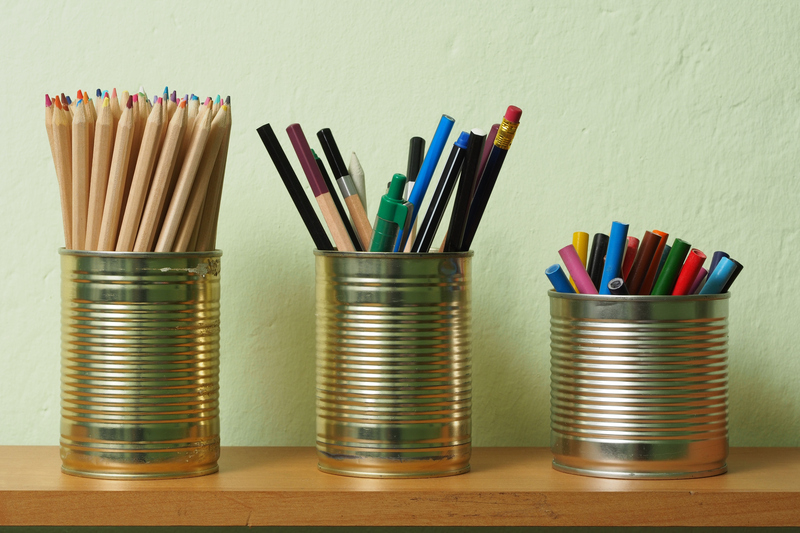From Ancient Dumping to Modern Recycling: The Evolution of Waste Management
The journey of waste management is as old as human civilization itself. The path from unregulated ancient dumping sites to the sophisticated modern recycling processes we witness today reveals a fascinating evolution of society's relationship with waste. In this comprehensive guide, we explore how garbage disposal has evolved, the milestones that have shaped current recycling practices, and what the future might hold for sustainable waste solutions.
Understanding Ancient Dumping: How Did Early Societies Deal with Waste?
Before the world knew recycling, making and discarding garbage was a much simpler, yet far less environmentally friendly process. In ancient times, humans were largely unaware of the harmful consequences of improper waste disposal. Instead, early communities resorted to rudimentary techniques, a practice now referred to as ancient dumping.
- Open Dumping: Many ancient societies simply left their waste in open areas surrounding their settlements. Archaeological excavations reveal large mounds of discarded materials, or middens, known as ancient landfills.
- Burning & Burial: Some communities would burn waste or bury it in pits, mainly to avoid odors and avoid attracting animals. While this kept living spaces clean, it offered no environmental protection.
- Reuse & Minimalism: Due to limited resources, objects like pottery, cloth, and metals were often reused or repurposed. Still, as populations and consumption grew, so did their waste output, leading to increased dumping.
The earliest record of organized waste disposal comes from the ancient Greeks, who instituted the first municipal dump several kilometers outside city walls in Athens, around 500 B.C. Residents were required to take trash out of the city, marking humanity's initial push towards structured waste management.
The Rise of Urban Areas and Increased Waste Generation
With the growth of cities during the Roman Empire and later in Medieval Europe, population density and the demand for goods caused a significant spike in waste. The results were often disastrous:
- Overflowing Streets: In London's medieval times, streets were notorious for being covered in garbage, animal waste, and human sewage, leading to pungent odors and severe health risks.
- Public Health Crises: Poor waste management was directly linked to outbreaks of diseases like cholera and the infamous Black Plague.
- Basic Sanitation Solutions: The first rudimentary garbage collectors emerged, and some cities introduced fines for improper disposal--a clear shift towards early waste regulations.
The Industrial Revolution in the 18th and 19th centuries accelerated the production and consumption of materials such as glass, metals, and the first plastics, compounding disposal challenges and necessitating new solutions.

The Dawn of Organized Waste Collection
As urban centers swelled, many cities around the world began to organize systematic waste collection and disposal services. This shift marked a significant improvement from ancient garbage dumping practices.
Pioneering the Path to Modern Recycling: Most Notable Milestones
The move from dumping to recycling and waste valorization wasn't instantaneous. History is shaped by some key developments:
- 19th Century:
- The first municipal waste incinerator ("Destructor") opened in Nottingham, England in 1874, aiming to address increasing waste volumes.
- Landfills became common as cities looked for safer, more organized dumping grounds.
- Early 20th Century:
- During both World Wars, nations promoted scrap drives for materials like metal, rubber, and paper, essentially reviving earlier habits of reuse and material recycling.
- Composting urban organic waste gained popularity as a means of soil enhancement.
- Mid to Late 20th Century:
- The global rise in consumption led to an explosion in single-use plastics and packaging waste, challenging existing waste facilities.
- Legislation such as the United States' Resource Conservation and Recovery Act (RCRA) in 1976 standardized waste treatment, disposal, and recycling initiatives.
- Grassroots environmental movements in the 1970s laid the groundwork for mainstream modern recycling campaigns.
Recycling found its major boost during periods of resource scarcity but became a steadfast part of modern life as awareness about limited landfill space and environmental pollution grew.
Modern Recycling: Transforming Trash Into Treasure
Today, the focus is no longer solely on disposing of waste but also on recovering resources and conserving the environment. Recycling in the modern era utilizes advanced technology and policy to minimize the impact of human activity on our planet.
How Does Today's Recycling Work?
Recycling typically involves several well-coordinated stages:
- Collection and Sorting: Households and businesses separate materials like paper, plastics, glass, metals, and organics. Advanced facilities use automated systems, such as optical scanners and magnets, to further sort incoming waste.
- Processing: Items are cleaned, shredded, and prepared for re-manufacturing. For instance, glass is crushed into cullet; plastics are melted and reformed; metals are melted down and purified.
- Manufacturing: Recycled materials serve as raw inputs for new products--aluminum cans, cardboard boxes, clothing from PET bottles, and more.
- Market Integration: These recycled products re-enter the consumer market, creating a circular economy focused on sustainability, rather than extraction and disposal.
The effectiveness of modern recycling methods reduces landfill dependency, saves natural resources, and helps cut greenhouse gas emissions. By diverting waste from dumps and reusing it, societies prevent pollution and pave the way for a greener future.
Types of Modern Waste Recycling Techniques
- Single-Stream Recycling: Residents place all recyclables in one bin, and high-tech sorting facilities separate them.
- Source-Separated Recycling: Residents sort their own waste into designated bins--such as paper, glass, and plastics--making further processing more efficient.
- Composting: Organic waste like food scraps and yard trimmings are decomposed into nutrient-rich soil.
- Electronic Waste Recycling: Specialized plants safely process old electronics, recovering valuable metals and reducing hazardous landfill contents.
- Upcycling: Waste materials are creatively turned into higher-value products--like art, furniture, or new commercial goods.
*The integration of digitized sorting, artificial intelligence, and robotics in recycling facilities has dramatically increased efficiency and recovery rates, distinguishing modern recycling facilities from those in the early 20th century.*
Global Differences in Recycling Habits and Regulations
Environmental awareness varies worldwide, resulting in a diverse landscape of recycling practices:
- Europe: Countries like Germany and Sweden boast some of the highest recycling rates, thanks to strict producer responsibility laws and advanced deposit return schemes.
- United States: Recycling programs are locally regulated, creating wide disparities between cities and states. While some areas achieve notable recycling rates, others lag behind.
- Asia: Rapid urbanization in countries like China and India brings new challenges but also government-driven recycling innovations. Japan is renowned for its highly disciplined approach to waste separation and recycling.
- Developing Worlds: Many communities still contend with large, uncontrolled dumpsites and informal recycling economies, where "waste pickers" manually salvage recyclables.
International cooperation and policy exchange are increasingly vital to address the global waste crisis and adopt best practices for modern waste recycling.
The Ongoing Challenges of Modern Recycling
- Contamination: Improper sorting leads to contaminated recyclables, making it harder to process materials efficiently.
- Economic Viability: Fluctuating global markets affect the value of recycled materials, sometimes making recycling less profitable.
- Plastic Pollution: Many single-use plastics are not easily recyclable, and microplastics present new environmental hazards.
- Public Participation: Successful recycling depends on individuals' willingness to sort and reduce their own waste.

The Future: Toward a Circular Economy
Looking forward, the ultimate goal is to replace our traditional "take-make-waste" model with a regenerative "circular economy," where products and materials are kept in use as long as possible. This new model is driven by innovation in design, materials science, and public policy, as well as greater consumer awareness.
What Will the Next Era of Recycling Look Like?
- Zero Waste Initiatives: Cities around the world are adopting zero waste strategies, aiming to send no garbage to landfills or incinerators.
- Eco-Design: Manufacturers are rethinking product design to ensure easier recycling, disassembly, and reuse.
- Extended Producer Responsibility: Companies are being held responsible not only for the manufacturing but also for the end-of-life recycling of their products.
- Behavioral Change: Education and incentivization will play a major role in shifting consumer habits towards sustainable waste management.
Smart recycling bins and blockchain recycling tracking are just some of the technologies being tested to close the loop and increase transparency and efficiency throughout recycling systems worldwide.
Conclusion: Learning from the Past for a Sustainable Future
From ancient dumping grounds to modern state-of-the-art recycling plants, the evolution of waste management is a testament to human ingenuity and adaptability. By learning from history and harnessing the power of modern technology, we are better equipped to forge a path toward a sustainable, zero-waste future.
The story of waste disposal reminds us that every innovation, from the Athenian municipal dump to today's circular economy, started with a recognition of a pressing problem--and was solved with a creative solution. Our challenge now is to continue this legacy, ensuring that tomorrow's solutions make the most of our resources, respect our planet, and leave a healthier world for generations to come.
Frequently Asked Questions (FAQ)
-
What is the main difference between ancient dumping and modern recycling?
Ancient dumping involved unregulated disposal of waste with little concern for the environment or public health. Modern recycling, on the other hand, emphasizes resource recovery, waste reduction, and environmental protection through regulated processes and advanced technologies. -
Why did recycling become important in the 20th century?
Rapid industrialization, urban growth, and increasing waste production created severe pollution and landfill crises. Recycling became crucial to conserve natural resources, reduce environmental impact, and manage the excesses of modern living. -
How can individuals help advance modern recycling?
By properly sorting recyclables, reducing single-use items, supporting eco-friendly products, and staying informed about local recycling rules, everyone can contribute to a healthier planet and more effective recycling systems.
From Ancient Dumping to Modern Recycling is more than just the story of trash; it's the story of humanity's evolving commitment to stewardship and innovation. Let us continue advancing toward a truly sustainable society, one recycled item at a time.